 Research Update
Research Update
23
JunOn June 17, 2017, the Report Meeting of China Macro Economy Forum (2017 Semi-Annual), jointly hosted by the National Academy of Development and Strategy (NADS) and the School of Economics of Renmin University of China (RUC), and China Chengxin Credit Management Co., Ltd., was held in RUC under the theme of “China’s Macro Economy in Rebound, Differentiation and Period Transformation”.
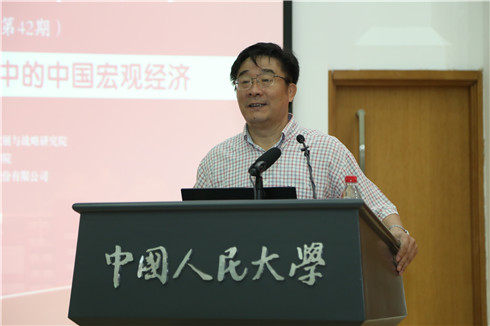
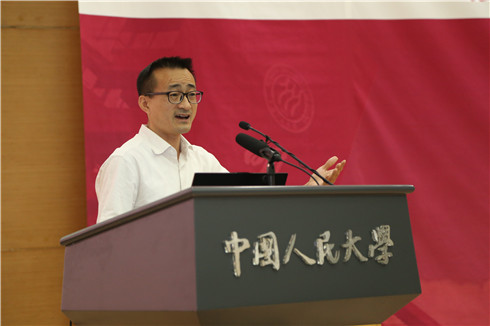
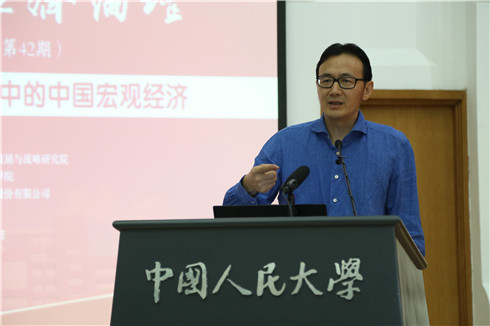
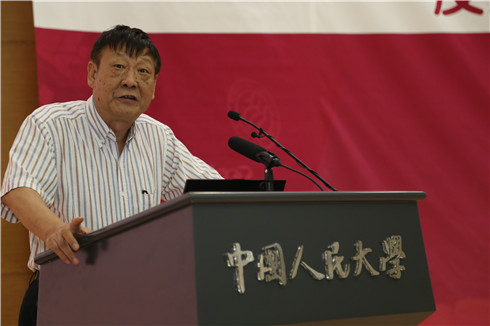
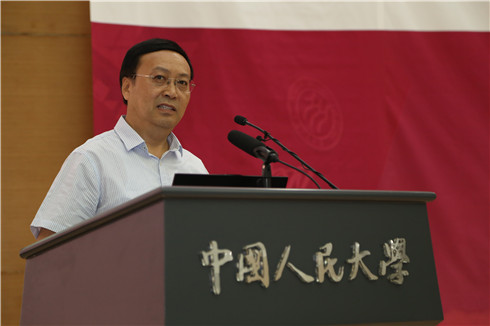
Participants of the Forum included such experts and scholars as Liu Wei, President of RUC and Dean of NADS; Hu Naiwu, First-grade Professor of RUC; Liu Yuanchun, Vice President of RUC and Executive Dean of NADS; Xu Zhong, Director General of the People’s Bank of China Research Bureau; Gao Peiyong, Committee Member of Academic Divisions of the Chinese Academy of Social Sciences (CASS) and Director of CASS Institute of Economics; Cao Yuanzheng, Chairman of BOC International Research Co., Ltd. and Senior Research Fellow of NADS; Yang Ruilong, Joint Director of RUC Institute of Economic Research; Yan Yan, President of China Chengxin International Credit Rating Co., Ltd. and Joint Deputy Director of RUC Institute of Economic Research; and Liu Fengliang, Executive Vice Dean of RUC Graduate School and Research Fellow of NADS.
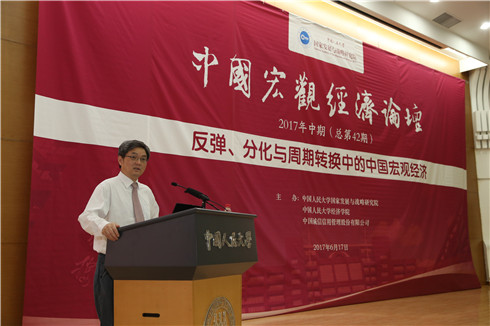
Session I of the Forum was moderated by Yang Ruilong, Joint Director of RUC Institute of Economic Research.
In addressing the Forum, President Liu Wei of RUC stated the studies on Chinese issues should be enduring at first and then, deep-going. The studies on China’s macroeconomic issues conducted by NADS Macroeconomic Forum Team must have gone deeply because they have a constructive attitude and also emphasize logical rigor, theoretical integrity and the accuracy in question analysis. In addition, research on Chinese issues should be systematic and start from the overall situation, for which all questions should be connected into a historical whole, so that the phenomena on a node of China’s macroeconomic operation and growth can be understood better, stressed by President Liu Wei. He also said NADS also shows its sense of responsibility and commitment as it attaches importance to and sticks to the long-term, deep-going and systematic studies on problems of policy and reality.
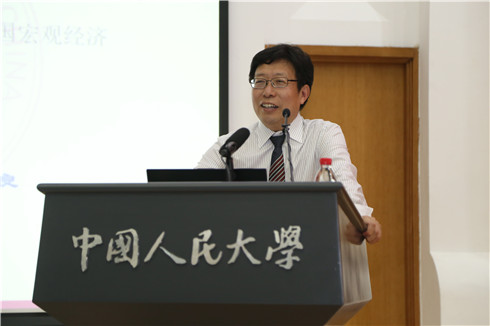
Liu Fengliang, Executive Vice Dean of RUC Graduate School and Research Fellow of NADS, released, on behalf of the Research Group, the theme report of the Forum: Analysis and Forecast of China’s Macro Economy (2017 Semi-Annual)—China’s Macro Economy in Rebound, Differentiation and Period Transformation.
According to the report, China’s macro economy was featured by rebound and differentiation in the first half year of 2017. Driven jointly by China’s macro policies focused on the supply-side structural reform and the world’s economic recovery, China’s macro economy continued the steady and improving development that was witnessed in the second half year of 2016, as multiple macroeconomic indicators tended to improve, nominal GDP growth picked up for the 5th consecutive quarter, the micro foundation of economic operation got enhanced further, the economic structure continued to improve, and overall economic situation had a good start.
The Research Group indicated under the keynote of macro policy adjustment, investment growth for infrastructure construction and real estate will slow down in the second half year, while the strength of rebound in private investment is to be observed, with a slim chance for offsetting the former’s gap, and the downward pressure on fixed-asset investment nationwide will be increasingly witnessed over time; in the meantime, consumption growth will be restricted along with the slowdown in resident income growth. Nevertheless, international cycle will provide powerful support in a short term. In general, the second bottom of this round of “asymmetric W-shaped adjustment” was formed from the end of 2016 to the beginning of 2017, featured by stabilization in fluctuation, as the Macroeconomic Forum Team pointed out in the 2016 Q2 report. GDP growth will be 6.7% and CPI growth 2%, according to model prediction.
The uppermost problem facing Chinese economy lies in the short-term blockage in China’s macroeconomic transmission and the long-term downturn of productivity, in the opinion of the Research Group. It showcases, in a centralized manner, various structural contradictions between the release of risks accumulated in the periodical downturn of China’s economy and the tightening of China’s policies, the weakening of traditional driving forces and the cultivation of a new cycle. The new cycle won’t get launched until another round of reform and opening-up policies are implemented and a new power source is cultivated with the core on the building of new driving forces. A new round of reform, namely the supply-side structural reform with the tasks of “cutting overcapacity, destocking, deleveraging, reducing corporate costs and shoring up weak spots”, will remove structural problems in economic transmission, rebuild China’s economic transmission path and breathe life in China’s economy on the one hand; and further improve potential productivity on the other hand.
This round of reform will be carried out under the New Normal, with the focus on the supply-side structural reform, and will show some new features. First, it’s necessary to avoid incentive by GDP ranking. Second, dominant right of the reform should be shifted from local governments to the Central Government. Third, attention should be paid to the evaluation of local governments’ executive force while being conscious of the ideology, the whole, the core and the line. Last, the coordinating function of the Leading Group for Deepening Reform Comprehensively should be strengthened. The Research Group also pointed out fiscal and monetary policies should be utilized further, overall economic leverage ratio should be reduced further by orderly deleveraging via financial means and revenue should play a positive role in economic operation so as to provide time and space for the new reform.
Session II was moderated by Yan Yan, President of China Chengxin International Credit Rating Co., Ltd. and Joint Deputy Director of RUC Institute of Economic Research, where specialists and guests present had in-depth discussions and communications on issues concerning China’s macro economy in period transformation.
Liu Yuanchun, Vice President of RUC and Executive Dean of NADS, stated in discussions that China’s technological catch-up timing is coming, accompanied by the arrival of the demand side and the prepared industrial reserve army; all the three factors make up a powerful foundation for the start of a new cycle of China’s macro economy. However, there are still three challenges left—financial reorganization and real estate governance, reform of state-owned enterprises, and government reform. Upgrading and growth in the new cycle requires a service-oriented government that can break the control, release investment space and open tertiary-industry investment really to all business entities.
The Party and the Central Government both attach great importance to philosophy and social sciences, said Gao Peiyong, Committee Member of Academic Divisions of CASS and Director General of CASS Institute of Economics. Seen from some perspective, we are standing at a new starting point in history with an exceptionally complicated situation of economic and social development, when the Party and the Central Government are increasingly fierce about research findings in philosophy and social sciences. Seen from the perspective of demand, it’s necessary to extend from realistic problems to theoretical issues in key directions of studies on macroeconomic policies and trends.
Xu Zhong, Director General of the People’s Bank of China Research Bureau, believed to achieve a dynamic balance between stable growth and deleveraging, attention must be paid to the relations between the Central Government and local governments. While playing down GDP goals, we need to build an effective mechanism that can relax the Central Government’s control over debt limit and open up the front door of financial regulation by local governments, and also improve the governance system and make debt information more transparent.
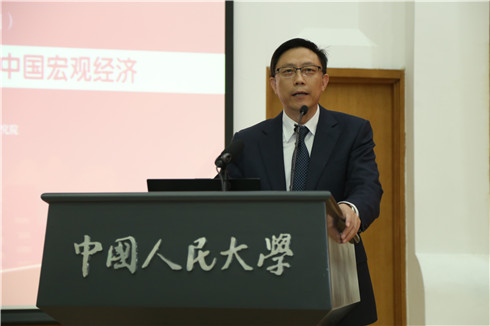
Cao Yuanzheng, Chairman of BOC International Research Co., Ltd. and Senior Research Fellow of NADS, stated in a keynote speech that leverage is the real reason behind the fact that nominal GDP growth is faster than actual growth. Subsequently, Mr. Cao expounded on why should deleveraging be conducted, what leverage should be reduced and how to perform deleveraging.